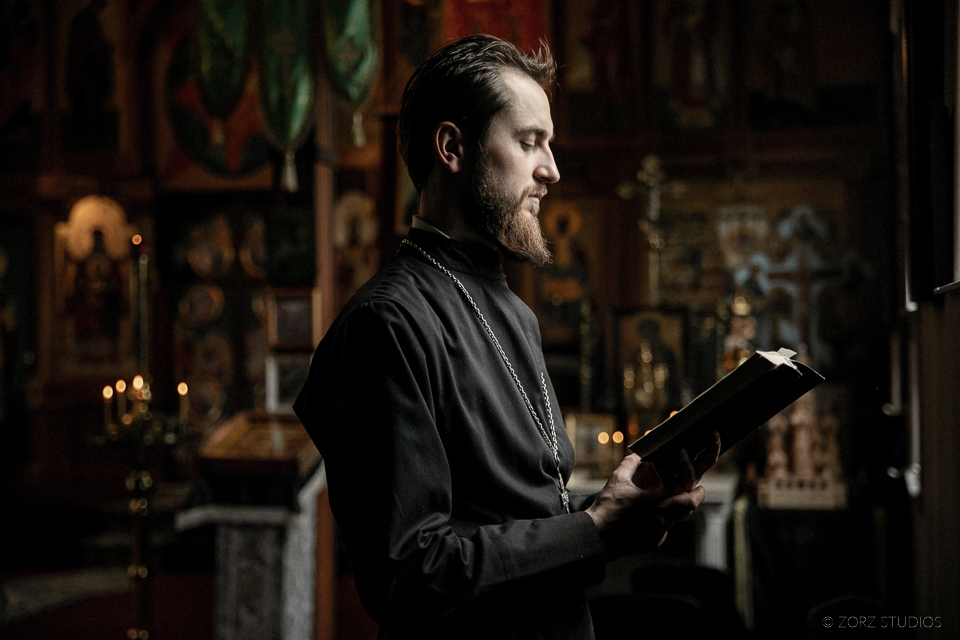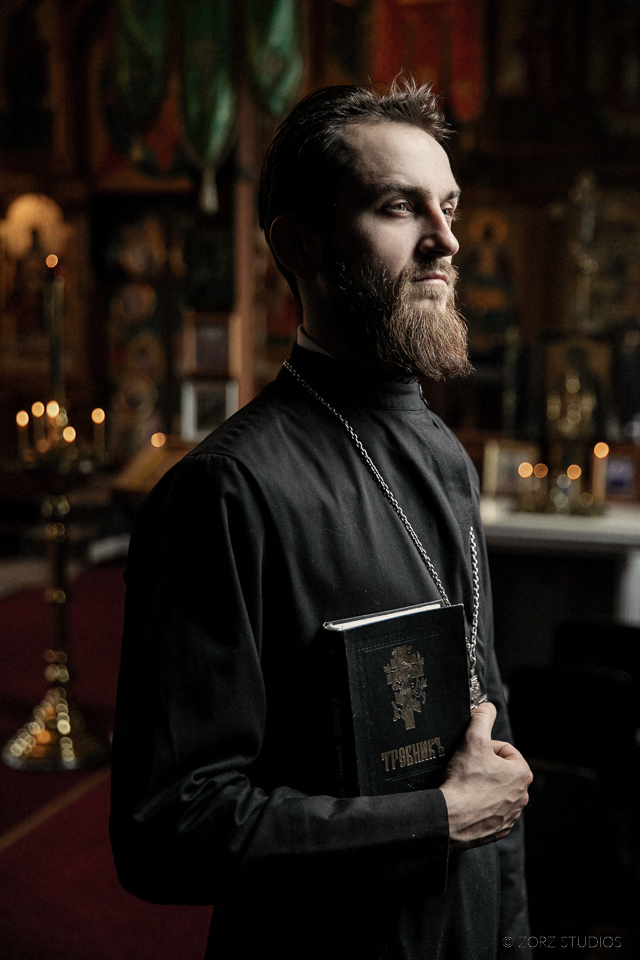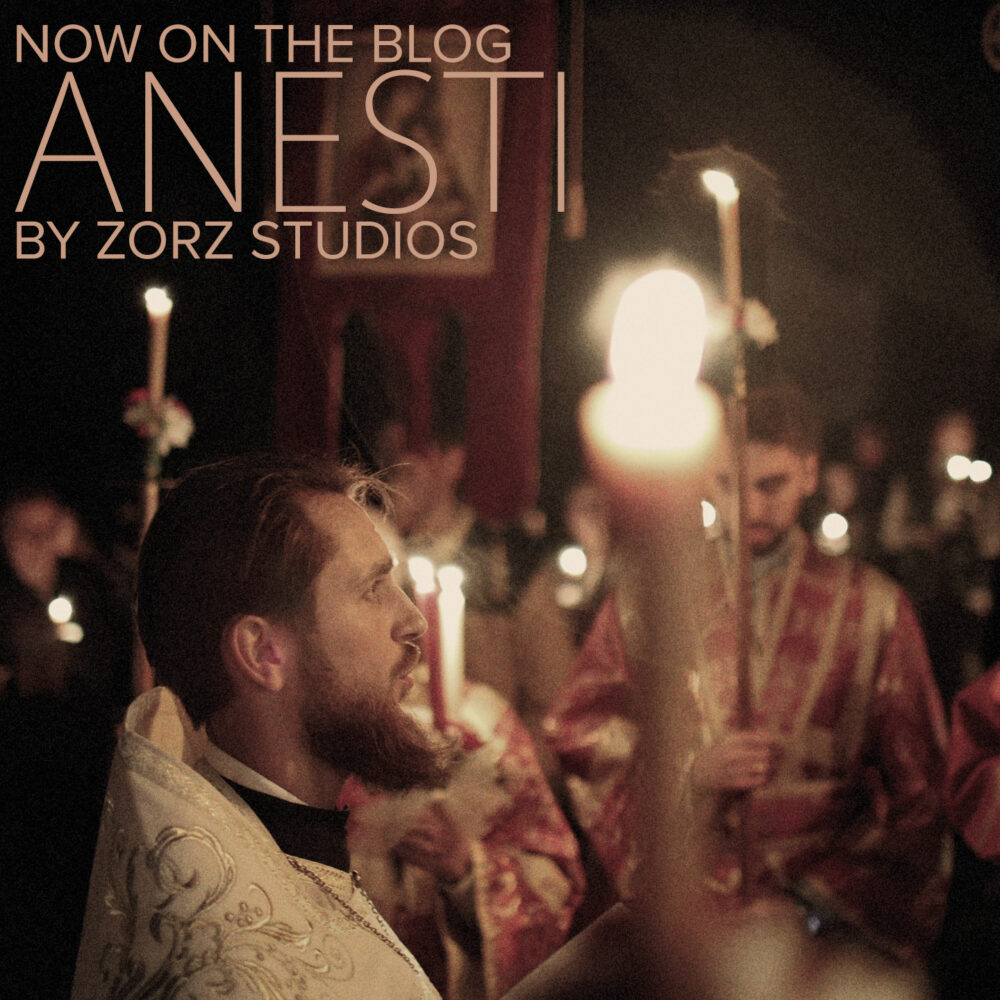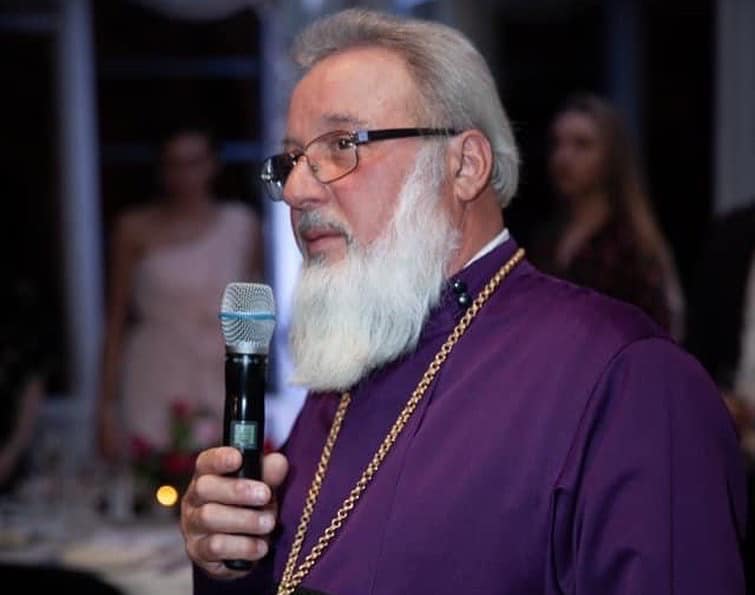Last weekend, I had an honor and exciting opportunity to film one of the brightest events in my family’s life: Eastern Orthodox Easter. Adding to its personal significance, it was celebrated at our parish, the Church of All Saints, in Pine Bush, NY. I’ve never filmed anything like this, so regardless of your faith or denomination, you may enjoy the attempted creativity of this 9-minute highlights video, along with a background story and cameo appearance of my wife and the little one.
Table of Contents
What Is the Eastern Orthodox Church?
The Eastern Orthodox Church, also known as the Orthodox Church, is one of the oldest Christian religious institutions in the world. It traces its roots back to the earliest Christian communities and the Apostles, and it is considered one of the three major branches of Christianity, along with Roman Catholicism and Protestantism.
The Eastern Orthodox Church is a communion of autocephalous (self-governing) churches, each led by its own bishop or patriarch. It is centered in Eastern Europe, the Middle East, and parts of Africa and Asia and is the dominant form of Christianity in many of those regions.
Key characteristics of the Eastern Orthodox Church include:
- Theology and Beliefs: The church adheres to the Nicene Creed and emphasizes the continuity of apostolic tradition and teachings. The Eastern Orthodox Church holds to doctrines such as the Trinity (Father, Son, and Holy Spirit), the divinity and humanity of Christ, and the resurrection.
- Liturgy and Worship: Worship in the Orthodox Church is characterized by the Divine Liturgy, which is deeply ritualistic and involves the celebration of the Eucharist. Services are known for their rich use of icons, incense, and chanting.
- Iconography: Icons, or religious images, play a central role in Orthodox worship. They are seen as windows to the divine and are used extensively in both churches and private devotion.
- Sacraments: The church recognizes seven sacraments: Baptism, Chrismation (Confirmation), Eucharist, Confession, Anointing of the Sick, Holy Orders, and Marriage.
- Ecclesiastical Structure: The church is organized into a hierarchical structure of bishops, priests, and deacons, and it maintains a strong sense of unity and communion among its various autocephalous churches.
- Tradition: The Eastern Orthodox Church emphasizes the importance of Holy Tradition, which includes the teachings of the Church Fathers, the decisions of ecumenical councils, and the continuous practices and liturgies of the church.
- Calendar: The church typically uses the Julian calendar for its liturgical year, although some churches have adopted the Revised Julian (New Calendar) for feast days, including Christmas and other fixed dates.
Overall, the Eastern Orthodox Church is a major branch of Christianity known for its deep historical roots, emphasis on continuity of tradition, and distinctive practices in worship and theology.
Points 3, 6, and 7 are possibly the most distinct and prominent. Let me just touch upon tradition and calendar here.
Adherence to Traditions and Strictness
The Eastern Orthodox Church can be seen as adhering more strictly to traditional practices and doctrines compared to some Western Christian denominations, such as many Protestant denominations, which may have more varied interpretations and less emphasis on uniform practices.
Here are some ways in which the Eastern Orthodox Church may be considered more traditional or strict:
- Liturgy and Worship: Orthodox worship services are highly ritualized and follow a set pattern based on centuries-old traditions. The Divine Liturgy and other services include chants, hymns, and prayers that have been passed down through generations.
- Fasting and Feast Days: The Orthodox Church observes several fasting periods throughout the year, such as Lent, during which faithful are expected to follow specific dietary restrictions and other practices. These periods of fasting are generally more comprehensive than those observed in many Western Christian traditions.
- Sacraments and Church Teachings: The Orthodox Church emphasizes the importance of adhering to traditional teachings and practices, including the sacraments and the decisions of ecumenical councils. The church values continuity with early Christian teachings and practices.
- Iconography and Religious Art: Orthodox churches make extensive use of icons (religious images) and have specific rules regarding their creation and use. This is part of the church’s emphasis on continuity and tradition.
- Clergy and Ecclesiastical Structure: The Orthodox Church maintains a hierarchical structure of clergy, with bishops, priests, and deacons. Clergy are typically required to follow certain practices and standards, such as celibacy for bishops and other expectations for the conduct of clergy.
Among other things, the Eastern Orthodox Church, adhering more strictly to traditional practices and doctrines, also plays a role in preserving traditional family values and social virtues and identifications—the heated points on the progressive socio-political agenda that I’ll avoid discussing here.
While these practices may seem strict to some, they reflect the Orthodox Church’s commitment to preserving its heritage and continuity with the early Christian church. It’s important to note that what one person perceives as strict may be seen by another as a source of spiritual depth and authenticity.
Why Is Eastern Orthodox Easter on a Different Day?
The date of Easter for either the Orthodox or Catholic (or Western Christian) calendar is movable and is calculated based on the lunar calendar in relation to the spring equinox.
- Spring Equinox: Easter is based on the date of the spring equinox, which is around March 21.
- Paschal Full Moon: the first full moon occurring on or after the spring equinox.
- Sunday Following: Easter is celebrated on the Sunday following the Paschal full moon.
The difference between the Orthodox and Catholic calendars regarding the spring equinox is due to their use of different calendars: the Julian calendar and the Gregorian calendar.
Julian Calendar: The Orthodox Church uses the Julian calendar, which was introduced by Julius Caesar in 46 BCE. The Julian calendar’s average year length (365.25 days) is slightly longer than the actual solar year (approximately 365.2425 days). This discrepancy results in a gradual shift of the equinox date in relation to the calendar date over the centuries.
Gregorian Calendar: Introduced by Pope Gregory XIII in 1582, the Gregorian calendar is used by the Catholic Church and most Western Christian denominations. It adjusts for the discrepancy in the length of the solar year. The Gregorian calendar adds leap years differently.
Thus, when determining the date of Easter, the difference in the equinox date between the two calendars can result in different calculated dates for the holiday in most years. On occasion, like in 2017, the dates coincided.
Which Countries Celebrate Eastern Orthodox Easter?
Countries that primarily celebrate Eastern Orthodox Easter include:
- Greece: Eastern Orthodox Christianity is the predominant religion in Greece, and Orthodox Easter is the most significant religious holiday.
- Russia: The Russian Orthodox Church is the largest Orthodox Church, and most people in Russia celebrate Orthodox Easter.
- Serbia: Eastern Orthodox Christianity is the major religion in Serbia, and Orthodox Easter is a key religious and cultural event.
- Bulgaria: The majority of Bulgarians are Eastern Orthodox, and Orthodox Easter is a major holiday.
- Romania: The Romanian Orthodox Church is the primary religious institution in Romania, and Orthodox Easter is a significant event.
- Moldova: The Moldovan Orthodox Church (Metropolis of Chișinău and All Moldova, established by the Russian Church) is the country’s dominant religious institution of up to 85 percent of local Orthodox believers, and it celebrates Orthodox Easter.
- Ukraine: Although there has been a split between the Orthodox Church of Ukraine (ПЦУ, following the Gregorian Calendar) and the Ukrainian Orthodox Church (УПЦ, Moscow Patriarchate), most people in Ukraine celebrate Orthodox Easter.
- Ethiopia: The Ethiopian Orthodox Church follows the Julian calendar and celebrates Easter according to the Eastern Orthodox method of calculation.
- Georgia: The Georgian Orthodox Church is the dominant religious institution in Georgia, and the country celebrates Orthodox Easter.
Other countries in Eastern Europe, the Middle East, and parts of Africa and Asia with significant Eastern Orthodox populations also celebrate Orthodox Easter on a different date than Western Christian Easter.
Overnight Eastern Orthodox Easter Service
The overnight Eastern Orthodox Easter service is one of the most significant and solemn services in the liturgical calendar. It is known as the Paschal Vigil or the Resurrection Vigil and includes various ceremonies and rites to celebrate the resurrection of Jesus Christ. Here is an overview of what usually takes place during this special service:
- Start of the Service: The service typically begins late at night on Holy Saturday, just before midnight, and continues into the early hours of Easter Sunday. It marks the transition from the solemnity of Holy Week to the joy of the Resurrection.
- Procession: The service often starts with the congregation and clergy gathering outside the church in darkness. The priest or bishop may lead a procession around the church, carrying a lit Paschal candle, symbolizing the light of Christ’s resurrection.
- Proclamation of the Resurrection: Once the procession returns to the church, the priest proclaims, “Christ is risen!” (“Христос Воскресе!”, “Christos Anesti!”) and the congregation responds, “Truly He is risen!” (“Воистину воскресе!”, “Alithos Anesti!”). This is repeated several times and is a joyful proclamation of the resurrection.
- Matins of Pascha: The service continues with the Matins of Pascha (Easter Matins), which includes hymns, psalms, and prayers celebrating the resurrection of Christ. The service is marked by joyful singing, especially the Paschal hymn “Christ is risen from the dead.”
- Divine Liturgy: After the Matins of Pascha, the Divine Liturgy of Pascha is celebrated. This is the Eucharistic service, during which the congregation partakes in the Holy Communion.
- Scripture Readings and Sermon: There may be readings from the Gospels and other parts of Scripture focusing on the resurrection. The priest may also deliver a sermon related to the significance of the resurrection.
- Blessing of the Baskets: In some Orthodox traditions, the clergy bless baskets of food brought by the congregation. These baskets typically contain items such as eggs, bread, cheese, and meat that are to be eaten to break the Lenten fast.
The entire service is filled with joy and celebration as it marks the central event of the Christian faith—the resurrection of Jesus Christ. It is a time of great festivity and spiritual renewal for the Orthodox community.
Eastern Orthodox Easter Service Video
Here’s the Eastern Orthodox Easter Service highlights video, finally. I filmed it for three hours, edited and rendered for about 18 hours, and wrote the blog for about 16 hours. However, it wasn’t my goal to capture the full ceremony start to finish.
First, full coverage would partially immobilize me to secure the visual continuity. I wouldn’t be able to pause and play with the angles, directions, and locations constantly. Second, I didn’t want to be an annoyance in front of the parish all the time, so I regularly stepped aside and put the camera down. Lastly, I wanted to partake in the service, too. As a result, some moments may have been missed, but I believe I captured the key steps and edited them into a fairly short and consumable visual story.
I mixed the original sound with Russian Orthodox Easter chants, hymns, and prayers for the audio, trying to blend them seamlessly. Click below to play, sound on!
My wife Lara helped me with photography, she’s the lady running in the darkness in one scene.
The Church of All Saints

I’d like to talk a little about the dear church itself.
Its full name is Church of All Saints Illumed in Russia (Церковь Всех Святых, в Земле Русской Просиявших). In the early 1960s, the Moscow Patriarchate funded the purchase of 180 acres among the hills of Pine Bush, NY, 2.5 hours north of NYC. Archbishop of Dosifey (Dositheus Ivanchenko) built the church there in 1962-1964, and served there for many years along with Archipriest Abramtsev. He died a few months short of reaching 100 and was buried in the church’s cemetery in 1984.
The Patriarchate would send bishops from Russia to continue the service, but there was a period (1987) when the church was closed and unattended, slowly deteriorating.
In 1989, His Holiness Patriarch Pimen and the Holy Synod of the Russian Orthodox Church decided to appoint Archpriest Nikolai Babijtchouk rector of the Church of all Saints. A recent graduate of the Moscow Theological Seminary, he was given four days to pack with his wife Ekaterina and two daughters and fly from Ukraine to the US. Restoring the church was quite a labor, as described by him and Matushka Ekaterina in this article (in Russian).
The third daughter, Olga, was born in the US, and I’ll get to her shortly. Father Nikolai served for almost 33 years until after a severe injury. Following a prolonged but unsuccessful recovery, rector-emeritus of the Church of All Saints at the Patriarchal Metochion in Pine Bush, NY, reposed in the Lord in 2022.
Several months later, the priest Artemy Kulikovsky was appointed as the church’s abbot. He had married Olga Babijtchouk in 2019 and was already serving with her father, the late Archpriest, before 2022.
Welcoming Life of the Parish
My wife and I discovered the church in 2021 after moving to Poconos in 2018. We were first going to the church of The Monastery of St. Tikhon of Zadonsk in PA. It’s an incredible and kind place but its following a Gregorian calendar made it difficult for us. Plus, with the predominantly American clergy and parish, the Eastern Orthodox spirit, in its original sense, wasn’t there for us…
After a few years of continued search, we visited the Church of All Saints, which was 1 hour and 15 minutes east of us, just a bit longer than the monastery to the west. Right after listening to F. Nikolai’s hearty sermon for the first time, my wife said she found what she needed. If only he were around for longer for us to attend his services…
The old-timers say things were different years ago but I’m sure they will incrementally gain the steam. The parish is small because of a very dense Orthodox population in the area, and several other Eastern Orthodox churches closer to NYC metropolitan area. The highlights of the year are visits of the city pilgrims who vacation in Catskills Mountains in summer.
Yet, even our own little parish regularly has picnics, birthday celebrations, Christenings, occasional meals, and lawn games for kids after the service, where I have officially inaugurated the title of “alien” to chase the screaming little Earthlings.
We’re having a spring picnic this coming Sunday, May 12, at 1 PM.
This church is where our Veveya had her first confession and Eucharist. The only thing is, because we shoot on weekends, we miss at least half of Sunday services… Thankfully, I’ve just wrapped up an adventurous road trip to DC with my family this time, and we made it!
❤️ If you’re ever visiting the area, you’ll always be warmly welcomed, so do not hesitate to stop by. If you prefer to coordinate the visit or have questions, feel free to get in touch via the church’s Facebook page. And if you live within 1-1.5 hours of Pine Bush, NY, and have a heart for the Eastern Orthodox, we’d love to see you join our family! You’ll find support, guidance, and kindness here.










Something from My Heart
Matushka Olga already has two children, and when I learned about the third around the corner, I offered her a maternity session. While at it, I created some portraits for the Father Artemy.










By the way, matushka Olga is also a professional photographer of Olga’s Photos, offering portraits in the beautiful Hudson Valley and her sister’s alpaca Kwoka Farm. Both sisters sing in the church choir, along with their mother, the widow of F. Nikolai, and other devoted parishioners, some of whom have been around for decades.
Thank you for your time reading!
Χριστὸς ἀνέστη!
Христосъ воскресе!
Христос воскрес!
Христос васкрсе!
Christ is risen!
Hristos a înviat!
ქრისტე აღსდგა!
Christos tensiou!







